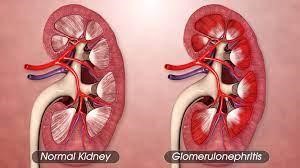A male client with coronary heart disease is informed by the healthcare provider that his cholesterol levels are significantly elevated and he needs to change his diet and lifestyle. The client emphatically states that he is not going to change his eating habits. What action should the nurse implement in response to the client's unwillingness to comply with the recommendations?
Provide pamphlets about heart healthy diet selections.
Refer the client to a dietitian for nutrition education.
Discuss client's concerns about the change in diet.
Suggest exercise as an alternative to increase HDL levels.
The Correct Answer is C
Choice A
Providing pamphlets about heart-healthy diet selections should not be implemented. Providing information is important, but it might not be as effective if the client is strongly resistant. Engaging in a conversation first can help tailor the information to the client's needs.
Choice B
Referring the client to a dietitian for nutrition education should not be implemented. A dietitian can provide valuable education, but it might be more beneficial to address the client's concerns and resistance before making the referral.
Choice C
Discussing client's concerns about the change in diet should be implemented. When a client is resistant or unwilling to make changes to their diet and lifestyle, it's important for the nurse to engage in open and empathetic communication. Option C, discussing the client's concerns about the change in diet, is the most appropriate initial response.
By engaging in a conversation with the client, the nurse can better understand the client's perspective, reasons for resistance, and potential barriers to making dietary changes. This approach allows the nurse to address the client's concerns, provide information, and work collaboratively to find solutions that might be more acceptable to the client.
Choice D
Suggesting exercise as an alternative to increase HDL levels should not be implemented. Exercise is important for heart health, but it's important to address the client's resistance to dietary changes first. Additionally, dietary changes and exercise can work together to improve overall heart health.
Nursing Test Bank
Naxlex Comprehensive Predictor Exams
Related Questions
Correct Answer is A
Explanation
Choice A
Counting carbohydrates will ensure glucose levels stay within a normal range is accurate. When providing dietary education to a client with Type 2 diabetes mellitus, it's important to emphasize the role of carbohydrate counting in managing blood glucose levels. Carbohydrate intake significantly impacts blood sugar levels, and counting carbohydrates can help the client make informed decisions about their meals and medications to maintain glucose levels within a normal range.
Choice B
Many carbohydrates are found in starches and fruits is not accurate. Carbohydrates are present in a variety of foods, including starches (such as bread, rice, and pasta) but not fruits. Educating the client about sources of carbohydrates can help them make choices that support blood sugar management.
Choice C
It is best to count carbohydrates when it feels like blood glucose is low is not accurate. Counting carbohydrates is an ongoing practice that helps individuals with diabetes maintain consistent blood sugar levels throughout the day, not just when blood glucose feels low.
Choice D
Examples of complex carbohydrates are white rice and cereals is inaccurate. White rice and many cereals are actually exampling of simple carbohydrates. Complex carbohydrates include foods like whole grains, legumes, and vegetables. It's important to provide accurate information about carbohydrate types.
Correct Answer is C
Explanation
Choice A
Following low carbohydrate diet with low glycaemic index foods is incorrect. This recommendation is not specifically related to the management of glomerulonephritis. While managing carbohydrate intake might be relevant for individuals with diabetes, it's not the primary focus for someone with kidney inflammation.
Choice B
Eating a high protein diet three times a day is incorrect: While protein is important for overall health and recovery, a high protein diet might not be the best recommendation for someone with compromised kidney function. Excessive protein intake could potentially put additional strain on the kidneys.
Choice C
Avoiding foods high in potassium is correct. Examples of foods high in potassium that the client should be cautious about include bananas, oranges, potatoes, tomatoes, spinach, and other fruits and vegetables. Glomerulonephritis is a condition involving inflammation of the glomeruli in the kidneys, which can affect kidney function and the regulation of electrolytes, including potassium. In glomerulonephritis, the kidneys might have difficulty filtering and excreting excess potassium, leading to a potential build-up of potassium in the blood (hyperkalaemia).
Choice D
Restricting sodium rich foods and excessive oral fluids is incorrect. This recommendation aligns more closely with managing fluid retention and blood pressure, which can be relevant for individuals with kidney issues. However, the primary concern in glomerulonephritis is often potassium balance, making the recommendation to avoid high potassium foods more pertinent.

Whether you are a student looking to ace your exams or a practicing nurse seeking to enhance your expertise , our nursing education contents will empower you with the confidence and competence to make a difference in the lives of patients and become a respected leader in the healthcare field.
Visit Naxlex, invest in your future and unlock endless possibilities with our unparalleled nursing education contents today
Report Wrong Answer on the Current Question
Do you disagree with the answer? If yes, what is your expected answer? Explain.
Kindly be descriptive with the issue you are facing.
